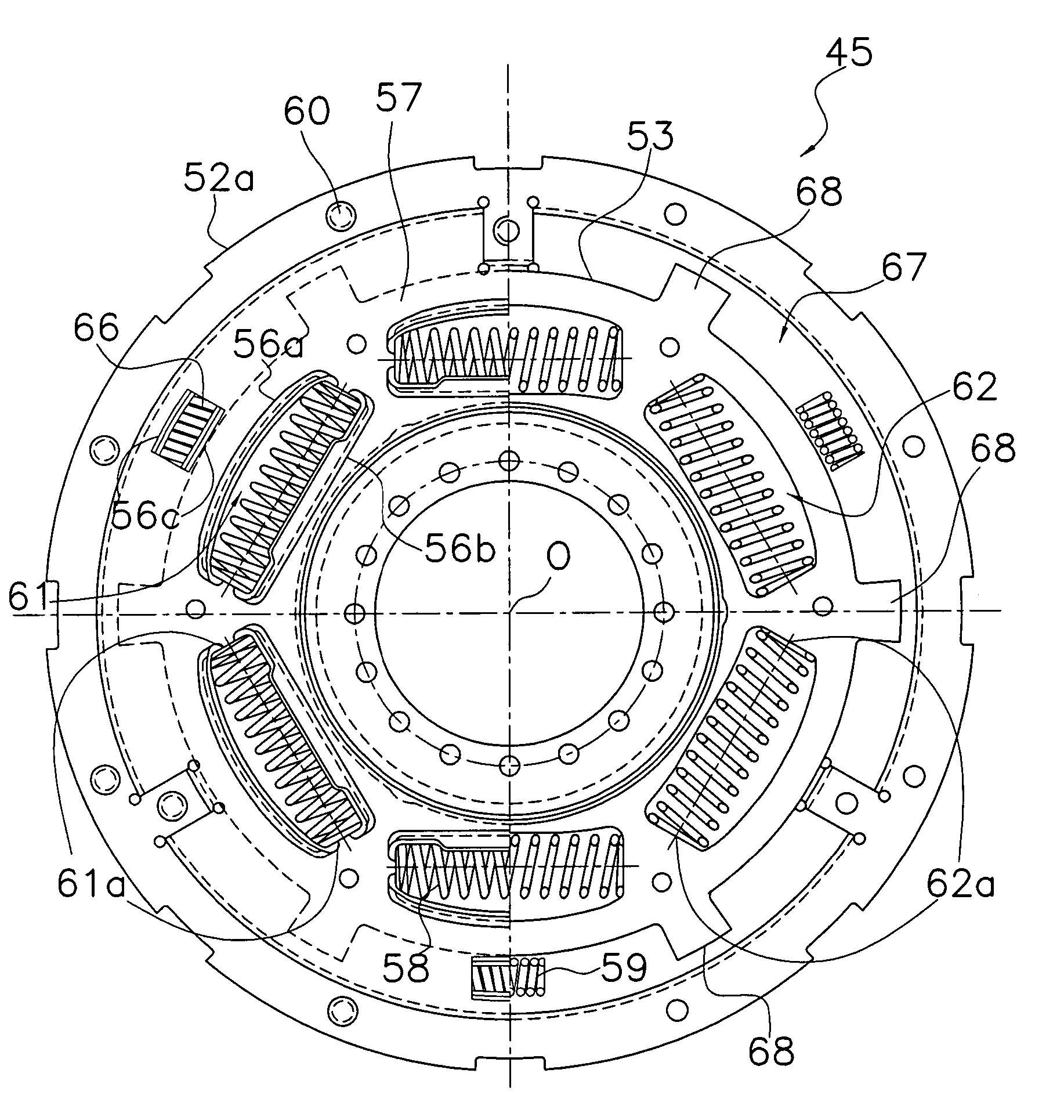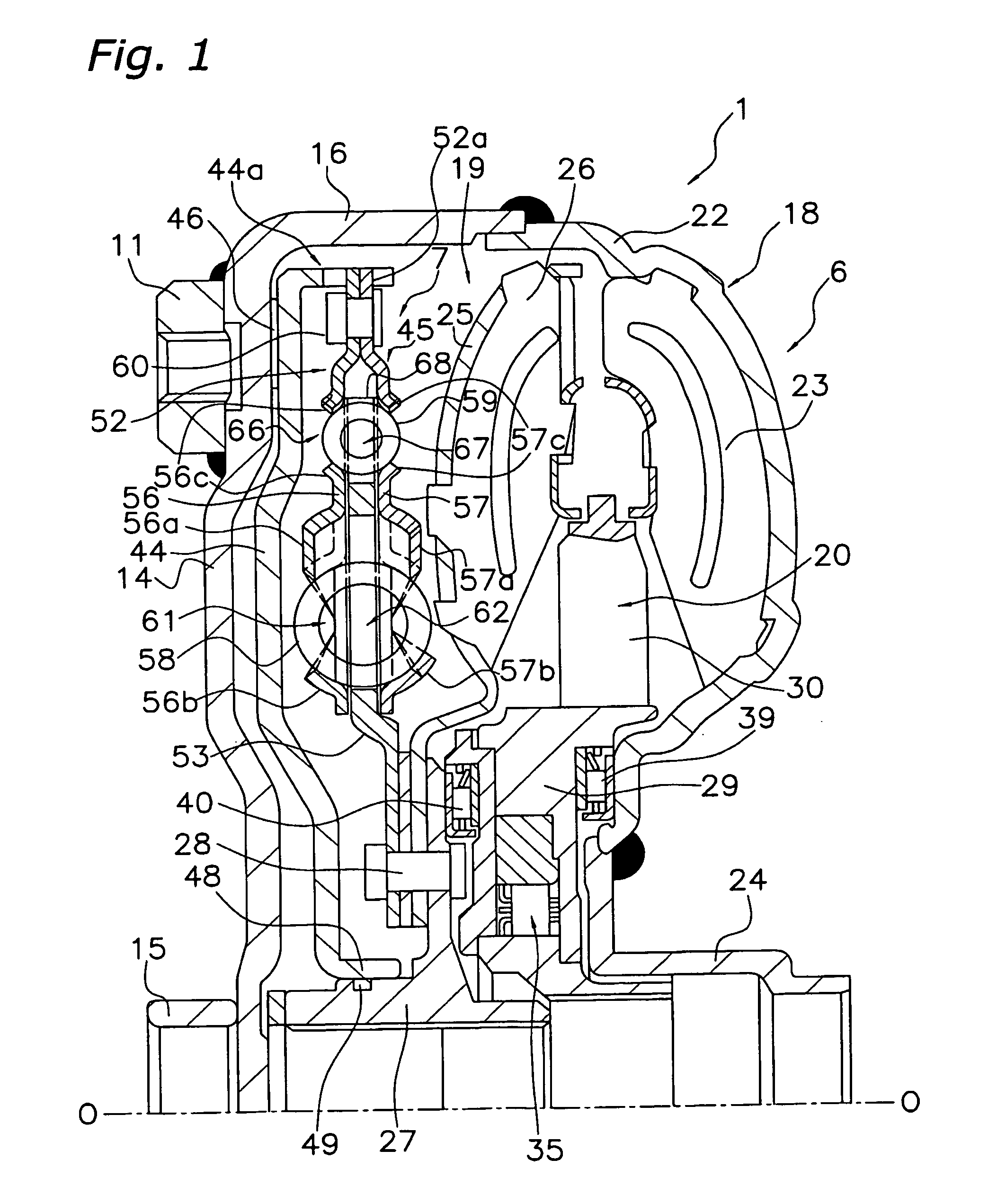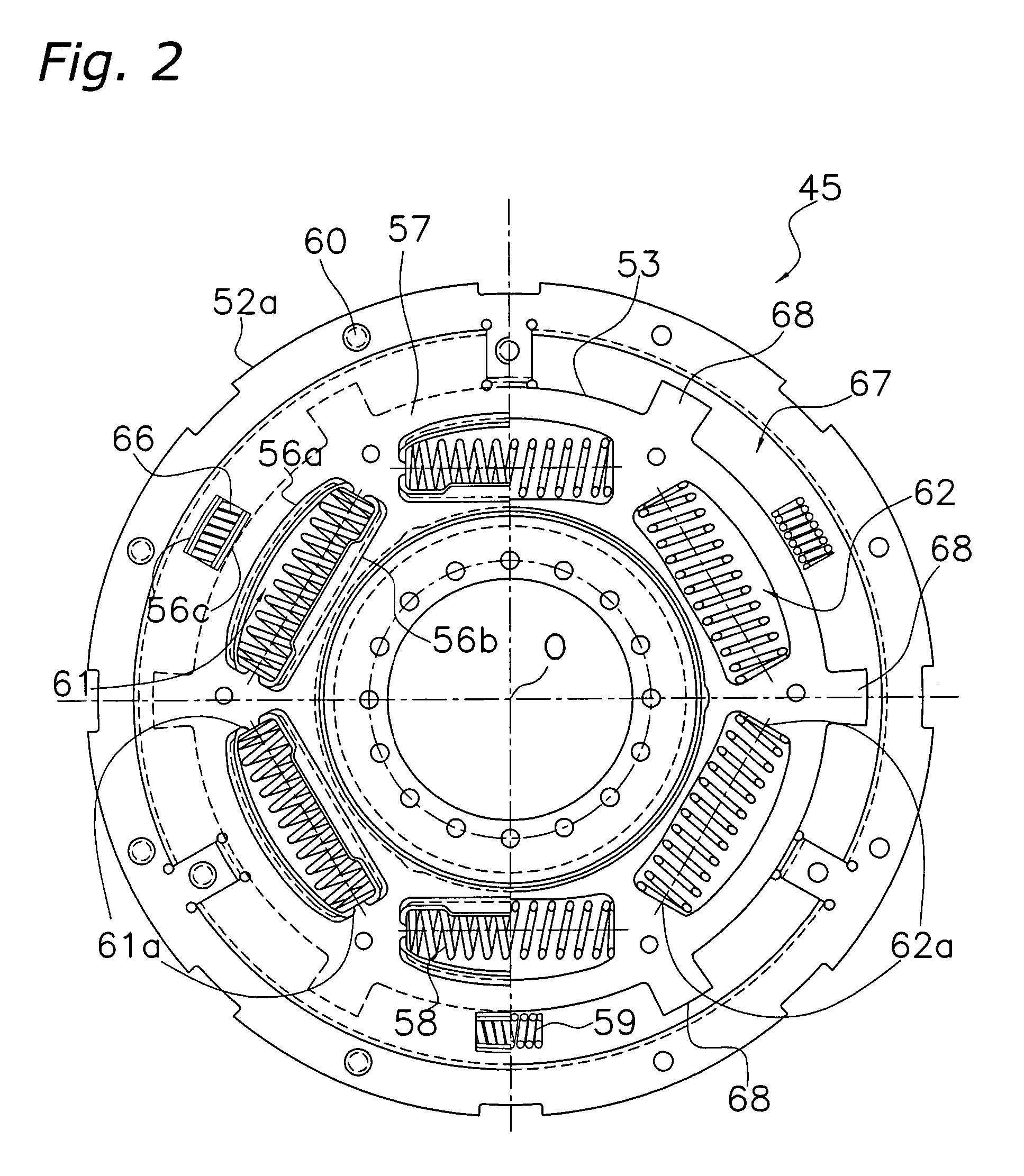Damper mechanism for a lockup clutch
a technology of lockup clutch and hysteresis torque, which is applied in the direction of fluid couplings, rotary clutches, gearing, etc., can solve the problems of reducing the lifetime of the elastic member, increasing the hysteresis torque and wear on the elastic member, etc., and achieves the suppression of the increase in hysteresis torque and wear, prolonging the shape, and increasing the lifetime
- Summary
- Abstract
- Description
- Claims
- Application Information
AI Technical Summary
Benefits of technology
Problems solved by technology
Method used
Image
Examples
Embodiment Construction
[0027]1. Structure of the Torque Converter
[0028]FIG. 1 shows a schematic cross section of a torque converter 1 employing an embodiment of the present invention. The torque converter 1 is a device for transmitting torque from a crankshaft (not shown) of an engine to an input shaft (not shown) of a transmission. Although not shown, the engine is arranged on the left side of FIG. 1, and the transmission is arranged on the right side of FIG. 1. In FIG. 1, O—O represents a rotation axis of the torque converter 1.
[0029]The torque converter 1 primarily includes a torus 6 which is formed of three kinds of vane wheels (i.e., an impeller 18, a turbine 19 and a stator 20), and a lockup device 7.
[0030]A front cover 14 is a circular disk-like member, and is arranged near the end of the crankshaft of the engine. A center boss 15 is welded to a radially inner portion of the front cover 14. A plurality of nuts 11, which are equally spaced from each other in the rotational direction (i.e., the circu...
PUM
 Login to View More
Login to View More Abstract
Description
Claims
Application Information
 Login to View More
Login to View More - R&D
- Intellectual Property
- Life Sciences
- Materials
- Tech Scout
- Unparalleled Data Quality
- Higher Quality Content
- 60% Fewer Hallucinations
Browse by: Latest US Patents, China's latest patents, Technical Efficacy Thesaurus, Application Domain, Technology Topic, Popular Technical Reports.
© 2025 PatSnap. All rights reserved.Legal|Privacy policy|Modern Slavery Act Transparency Statement|Sitemap|About US| Contact US: help@patsnap.com



